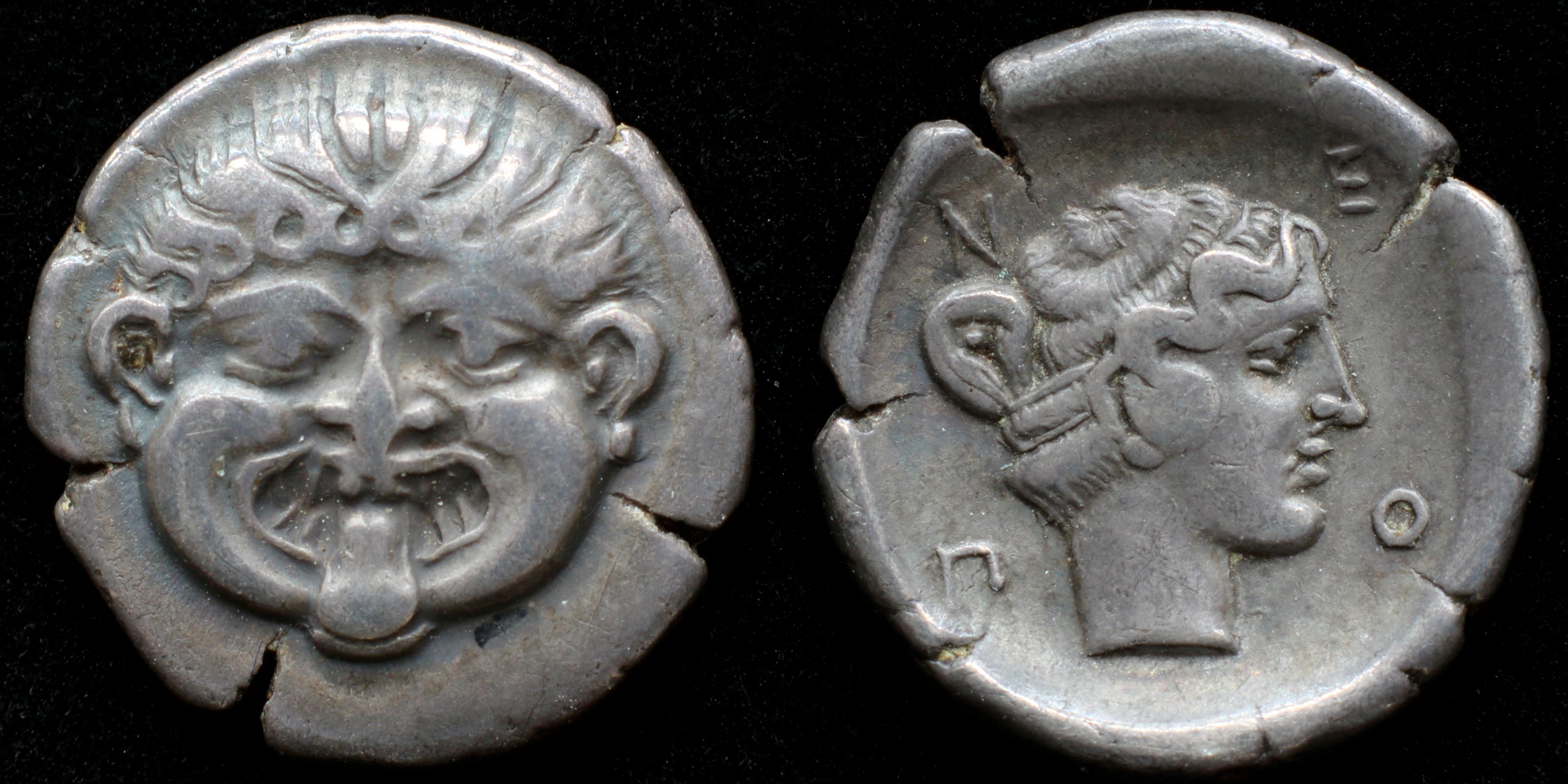Neapolis - modern Kavala - was founded in the late 7th century BC by settlers from Thassos.
It was one of several Thassian colonies along the coastline, all founded in order to take advantage of rich gold and silver mines, especially those located in the nearby Pangaion mountain (which were eventually exploited by Phillip II of Macedonia).
Worship of Parthenos / the Virgin, a female deity of Greek–Ionian origin associated with Athena, is archaeologically attested in the Archaic period. At the end of the 6th century BC Neapolis claimed independence from Thassos and began issuing its own silver coins with the head of Gorgo (γοργὀνειο) on one side.
The military Roman road Via Egnatia passed through the city and helped commerce to flourish. It became a Roman civitas in 168 BC, and was a base for Brutus and Cassius in 42 BC, before their defeat in the Battle of Philippi.
It was one of several Thassian colonies along the coastline, all founded in order to take advantage of rich gold and silver mines, especially those located in the nearby Pangaion mountain (which were eventually exploited by Phillip II of Macedonia).
Worship of Parthenos / the Virgin, a female deity of Greek–Ionian origin associated with Athena, is archaeologically attested in the Archaic period. At the end of the 6th century BC Neapolis claimed independence from Thassos and began issuing its own silver coins with the head of Gorgo (γοργὀνειο) on one side.
The military Roman road Via Egnatia passed through the city and helped commerce to flourish. It became a Roman civitas in 168 BC, and was a base for Brutus and Cassius in 42 BC, before their defeat in the Battle of Philippi.
Modern location: Kavála, Greece

An
AR
Hemidrachm
struck c. 424-350 BC
in
Neapolis (Macedonia)
Obverse: facing head of Medusa (Gorgoneion), tongue protruding
Reverse: diademed female head right; NEOΠ
Diameter:
13 mm
Die Orientation: -
Weight: 2 g
Die Orientation: -
Weight: 2 g
No notes for this coin
SNG ANS 430-454; SNG Cop 227; SNG Berry 41; BMC Macedonia p.85, 17; SGCV I 1417
